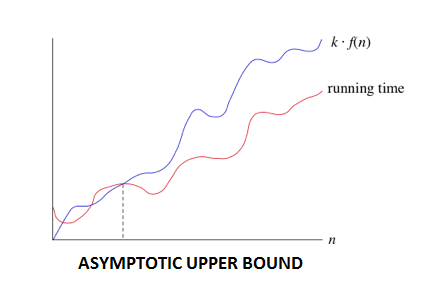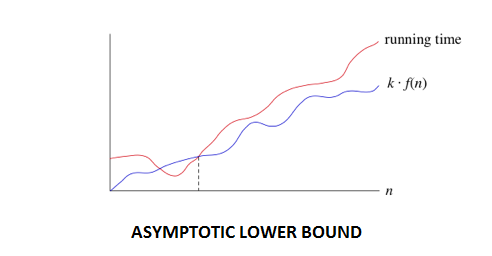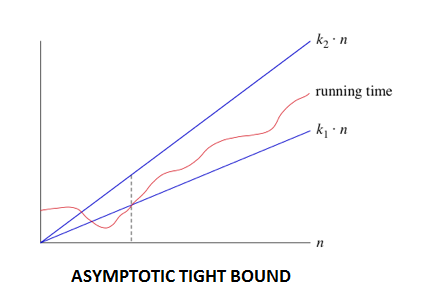Asymptotic Notations are used to describe the execution time of an algorithm. The notations show the order of growth of functions. Here the time taken by an algorithm is mapped regarding mathematical functions. There are many asymptotic notations like 0, θ, Ω,w each having its importance.
1. Big-oh notation: The function f (n) =O (g (n)) [read as "f of n is big-oh of g of n"] if and only if exist positive constant c and n0 such that
f (n) ⩽ C x g (n) for all n, n ≥ n0

Example1: The function 4n + 3 = O (n) as 4n + 3 ⩽ 5n for all n ≥.
Example2: The function 20n2 + 5n + 2 = O (n2) as 20n2+ 5n +2⩽21n2 for all n ≥.
2. Omega (Ω) Notation: The function f (n) = Ω (g (n)) [read as "f of n is omega of g of n"] if and only if there exists positive constant c and n0 such that
f (n) ≥ C* g (n) for all n, n ≥ n0

Example1: The function 4n + 3 = Ω (n) as 4n + 3 ≥ 4n for all n ≥1.
Example2: The function 20n2+ 5n +2 = Ω (n) as 20n2+ 5n +2 ≥ 20n2 for all n ≥1.
3. Theta (θ): The function f (n) = θ (g (n)) [read as "f is the theta of g of n"] if and only if there exists positive constant k1, k2 and k0 such that
k1* g (n) ≤ f (n)≤k2* g(n)for all n, n≥n0

Example1: The function 4n + 3 = θ (n) as 4n + 3 ≥ 4n for all n ≥ 3 and 4n + 3 ≤ 5n for all n ≥ 3.
Example2: The function 20n2+ 5n +2 = θ (n2) as 20n2+ 5n +2 ≤ 21n2 for all n ≥1 and 20n2+ 5n +2 ≥ 20n2 for all n ≥ 1.




No comments:
Post a Comment